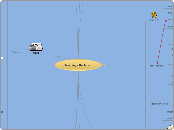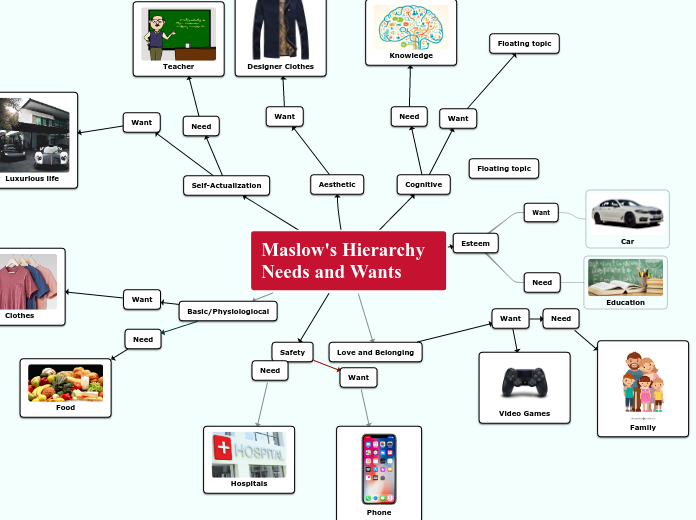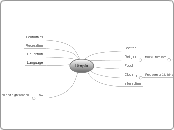WORKING LAWS COMPARAsION
MÉXICO
The unjder age work has to jbe superviced by the autorithies so the works can be developed as well as it should be, then the minors of 18 has to have a medical certificate where indicates the aptitude for the work
In non-industrial establishments after ten at night;
II. In immediately consuming intoxicating beverage outlets, canteens or taverns and centers
vice;
III. In jobs that may affect their morality or good customs; and
IV. In dangerous or unhealthy work that, due to the nature of the work, due to physical conditions,
chemical or biological environment in which it is provided, or by the composition of the raw material
used, are capable of acting on the life, development and physical and mental health of minors
When health contingecy is declared the labors of minors 18 yeras old could not be used
Its not considere work when the minor wokrs for her or his parents when its related to music, theater, modelling, scientific or sports
The consideration that the minor receives for the activities he carries out will never be less
to those who for salary would receive a greater of fifteen and less than eighteen years
The activities carried out by the minor may not interfere with his education, leisure and
Recreation in the terms established by the applicable law, will not imply risk for
their integrity or health and in any case, will encourage the development of their skills and talents
3. In height or confined spaces.
4. In which critical equipment and processes are operated where substances are handled
Hazardous chemicals that can cause major accidents.
5. Welding and cutting.
6. In extreme weather conditions in the open field, exposing them to
dehydration, heat stroke, hypothermia, or frostbite.
7. In roads with a large volume of vehicular traffic (primary roads).
8. Agricultural, forestry, sawing, silvicultural, hunting and fishing.
9. Productive industries of gas, cement, mining, iron and steel, oil
and nuclear.
10. Productive in the brick, glass, ceramic and cherry industries.
11. Productive in the tobacco industry.
12. Related to the generation, transmission and distribution of electricity and the
maintenance of electrical installations.
13. On construction sites
Basically the ones that puts on danger the integrity and the health of the minor
A mijnor cant work on sundays and on mandatory days off, in case of be needed it has to be payed over 200%
The working day of minors under the age of sixteen may not exceed six hours
daily and should be divided into maximum periods of three hours.
Children under the age of eighteen will enjoy an annual vacation period
paid eighteen business days, at least.
And the employed has to pai ensourance, capitation, vacations, enough time to the school activities and a work log thatmay include medical certifictes, capacitations taken and every regiter of the minor.
The labors that cant develop are: 1. Industrial nights or work after twenty-two hours.
2. Rescue, rescue and brigades against accidents.
Be expose to: Noise, vibrations, ionizing and non-ionizing infrared or ultraviolet radiation,
high or low thermal conditions or abnormal environmental pressures.
2. Chemical agents polluting the work environment.
3. Hazardous waste, biological agents or infectious contagious diseases.
4. Dangerous animals or plants
For the purposes of the work of minors, in addition to what the Laws provide,
Applicable regulations and standards shall be considered, as dangerous or unhealthy work, those that
involve:
The relationship established with the applicant must be in writing and will contain the consent
express that on behalf of the minor the parents, guardians or those who exercise the homeland power and cant interfere with the rights of the children
A minor cant work in this cases:
The minimum age is 15 ajnd with the parents of guardins aprovance
CANADA
The Canada Labour Standards Regulations state that persons under 17 years of age may be employed provided that:
they are not required by provincial law to attend school;
the work is not likely to endanger their health or safety;
they are not required to work underground in a mine or in employment prohibited for young workers under the Explosives Regulations, the Nuclear Safety and Control Act and Regulations, or the Canada Shipping Act; and
they are not required to work between 11 p.m. on one day and 6 a.m. on the following day.
While these federal rules are mirrored in provincial legislation, remember that the federal government regulates only a tiny percentage of Canadian workers. Almost all workers are regulated by provincial legislation.
Minimum wage rates per hour vary across the nation but all are around $9 – $11.
A parent or guardian must consent in writing to the employer for the adolescent to be employed.
They can work outside of normal school hours as defined in the Alberta School Act, RSA 2000, cS-3 if they are employed as a delivery person of small wares for a retail store, clerk or messenger in an office or retail store, delivery person for the distribution of newspapers, flyers, etc., or an occupation that is approved by the Director of Employment Standards. The employment must not be injurious to the life, health or welfare of the adolescent worker. The employer must complete a Safety Checklist and ensure compliance with it in order to employ an adolescent.
Adolescents must also be constantly supervised by someone over 18 while at work.
There are no restrictions on the type of work for young persons. If a young person works in any retail business selling food or beverages, any other goods or in the hospitality industry during the period between 9:00 p.m. and 12:01 a.m., the young person must be supervised continuously by at least one other adult. From 12:01 a.m. to 6:00 a.m., no young person can work unless the employer receives written consent from a parent or guardian and the young person is under constant supervision of an adult.
Each state has their own rights and rules, for example:
Under its Employment Standards Act,SNB 1982, c E-7.2, New Brunswick defines children as those under 16. No industrial undertaking, forestry, construction, hotel or restaurant work is permitted under the age of 14. Between 14 and 16, work may be performed that is not harmful, up to 6 hours in any day, or up to 3 hours on any school day outside of school hours, and not between 10:00 p.m. and 6:00 a.m. Directors’ permits may allow exceptions.
Manitoba restricts the employment of children under 16 and between the ages of 16 and 18. A child cannot be employed if under 12 years-of- age, or if the work adversely affects the child’s well-being. Children under 16 years cannot work more than 20 hours during a school week or between 11:00 p.m. and 6:00 a.m. unless permitted by the Director. Children under 18 cannot work alone; they must be supervised between 11:00 p.m. and 6:00 a.m. and they may not be employed in certain stipulated industries.
Legislation exists in all 14 jurisdictions to protect young workers in Canada. The rules relating to the nature of work, number of hours and when they can be worked (not during school or overnight), the age brackets for classifying young workers, supervision requirements and Directors’ overrides are all slightly variable across the country but they have similar intents, purposes and effects to protect the interests of young workers.
British Columbia does not separate young workers into two categories like Alberta. Rather, this province places conditions of employment for children 12 to less than 15 years of age, unless they are in the entertainment industry, where they can work from the age of 15 days. A child must not work more than four hours on a school day and more than seven hours on a non-school day unless the employer receives approval from the Director. They must not work more than 20 hours in a week that has five school days, and in any case, more than 35 hours in a week.
Adolescents must not work for longer than two hours outside of normal school hours on a day in which they are required to be at school, or work for longer than eight hours on a day in which they are not required to be at school.
Remember that each state has its own wage and earnings rate
UNITED KINGDOM
This is a country with a very particular system, the minimum age for work is 13 years old in a part-time work, except the ones involved in, television, theater or modelling, they will need a performance license
In England, a young person must be in part-time education or training until they’re 18.
To get a full-time work the child will need to reach the minimum scjhool leaving age and can´t work up to 40 hours a week and when the child turn 16 you may need to pay them trough PAYE and finally when the child turns 18 the adult rights and rules then apply
School-aged children are not entitled to the National Minimum Wage.
Children under 16 do not pay National Insurance, so you only need to include them on your payroll if their total income is over their Personal Allowance.
The standard Personal Allowance is £12,500, which is the amount of income you do not have to pay tax on.
Here lies a big difference and its because some incomes are tax-free
Children are not allowed to work:
without an employment permit issued by the education department of the local council, if this is required by local bylaws
in places like a factory or industrial site
during school hours
before 7am or after 7pm
for more than one hour before school (unless local bylaws allow it)
for more than 4 hours without taking a break of at least 1 hour
in any work that may be harmful to their health, well-being or education
without having a 2-week break from any work during the school holidays in each calendar year
Supervision, if the child will not be with their parent, school teacher or home tutor, they must be supervised by a chaperone approved by the council.
How much Income Tax you pay in each tax year depends on:
how much of your income is above your Personal Allowance
how much of your income falls within each tax band
A performance license it's a license where the parents or the tutor agree with the work and place the terms of it.
UNITED STATES OF AMERICA
As I understood, these are the most flexible laws, because the minimum age for work is 14 years old, but limits the number of hours worked by minors under the age 16
Subtopic
Of course the work developed cannot put on danger the life of the under age, for example, the work cant be about driving, excavation or power-driving equipment
The FLSA contains a number of requirements that apply only to particular types of jobs, for example: agricultural works or work by a minor for her or his parents
Not exception:
Towing vehicles;
Any other vehicle than an automobile or truck (i.e. bus, motorcycle, ATVs, golf cart);
Route deliveries or route sales;
Transportation for hire of property; goods, or passengers;
Urgent, time-sensitive deliveries;
Transporting more than three passengers, including employees of the employer;
Driving beyond a 30 mile radius from the youth’s place of employment;
More than two trips away from the primary place of employment in any single day to deliver the employer’s goods to a customer (other than urgent, time-sensitive deliveries which are prohibited);
More than two trips away from the primary place of employment in any single day to transport passengers, other than employees of the employer.
Examples of exceptions
No employee under 17 years of age may drive a motor vehicle on public roads as part of his or her job if that employment is subject to the FLSA.
DRIVING - 17 Years of Age
Seventeen-year-olds may drive on public roadways as part of their employment, but ONLY if all of the following requirements are met:
The driving is limited to daylight hours;
The 17-year-old holds a state license valid for the type of driving involved in the job performed;
The 17-year-old has successfully completed a state approved driver education course and has no record of any moving violations at the time of hire;
The automobile or truck does not exceed 6,000 pounds gross vehicle weight;
The automobile or truck is equipped with a seat belt for the driver and any passengers and the employer has instructed the youth that the seat belts must be used when driving the vehicle; and
The driving is only occasional and incidental to the 17-year-old's employment. This means that the youth may spend no more than one-third of his or her workday and no more than 20 percent of his or her work time in any workweek driving.
Each state has its own laws for under age labor









